The Red Dragon
Story by Ryan Nitzen/Trevor Hunter, Photos by Trevor Hunter
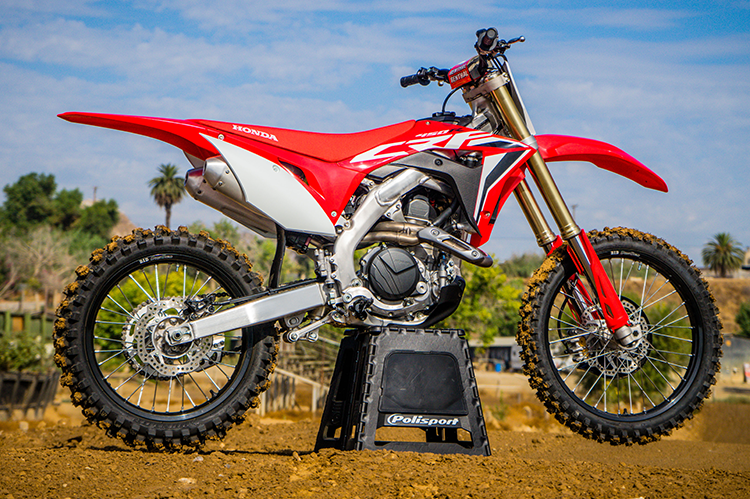
The 2020 CRF450R is Honda’s flagship motocrosser and the red riders are at it again with a host of updates for the new model year. After a major overhaul in ‘17, the current generation Honda 450 has been tough to beat at the local motocross tracks and inside the Supercross stadiums. For 2020, Honda engineers re-did the bike’s graphics, revised the three standard ECU maps, updated the suspension settings, lowered the battery box by 28mm to lower the overall center of gravity, and added an all-new traction control system with three unique levels of assistance.
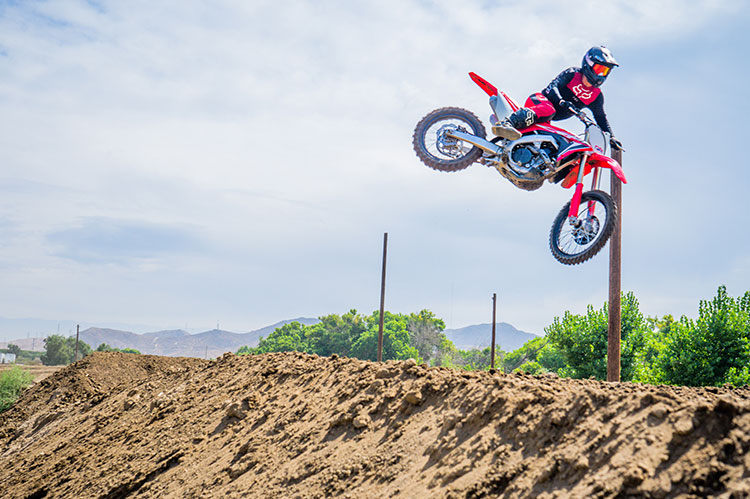
The motor on the CRF is undoubtedly one of the strongest in the class. Loads of torque down low accompany a strong mid-to-top, making it fun, yet sometimes difficult, to ride in tight and wide open sections. In 2019, our testers agreed that the Honda had the most power, but not necessarily the best power. It’s aggressive nature was hard for many to handle, especially those that were smaller or had little 450cc experience. For ‘20, their technicians have redone the three maps to make a smoother delivery in every part of the power band and it helped the rideability of the red marching. For our lighter tester who has minimal 450 experience, the bike is still a bit much to handle on a tighter jump infested track like Milestone. For riders transitioning from the smaller 250’s, the Honda is a handful and will take some time to adjust to the power, but we can certainly say most riders will be just fine by leaving the stock power plant alone rather than going out and spending money looking to make the dyno charts look more impressive.
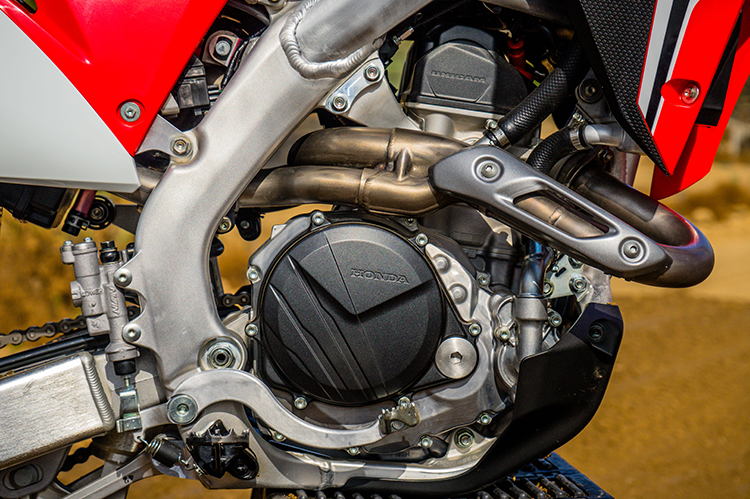
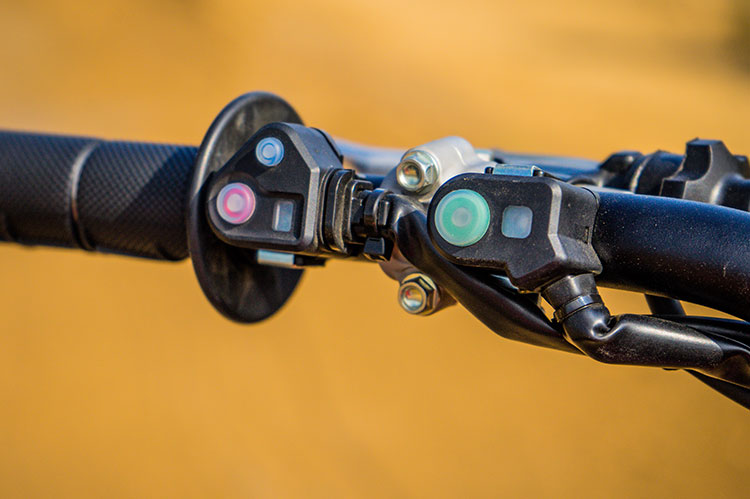
Our riders were also impressed with Honda’s revisions in the suspension department. At first the bike felt a bit harsh in the bigger braking bumps but would handle the bigger landings with ease. The on-hand Showa technician found our favorite setting by going 4 clicks out on compression and 2 clicks in on rebound. This allowed the bike to stay planted in the longer ruts and improved our confidence when charging through choppy braking bumps before the entrance of the corner.
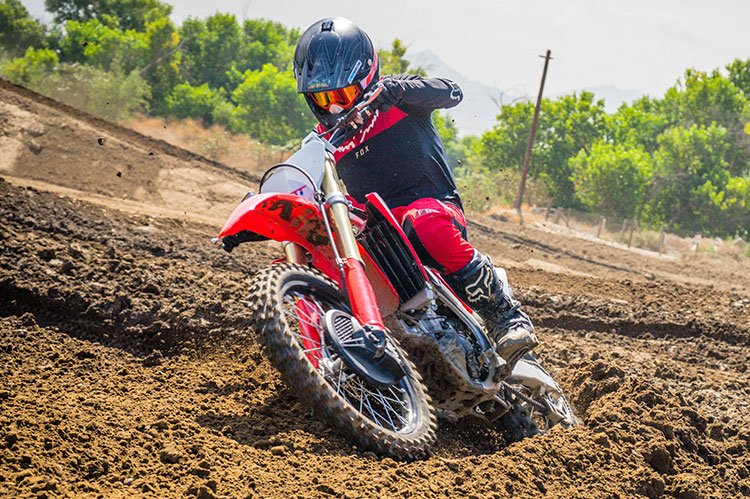
For our lighter 157lb tester, a lighter rear shock spring was needed to get the ideal sag of 105mm as we were topped out right around 100mm. As a result, we softened the high speed compression ½ turn, and also softened up the low speed compression 4 clicks to accompany the softer fork setting as mentioned above. The bike still had a slight twitch on corner entry, but considering we’re a bit under the target weight range, the bike is more than manageable on the tighter Milestone circuit and we feel the bike is just a lighter spring away from really good working suspenders.

The term “nothing corners like a Honda” holds true with the new 2020 model. A slim rider cockpit (flat seat profile, slim radiator shrouds, wide foot pegs, and a Renthal Fatbar) allows pilots to navigate the track with ease. Diving into Milestone’s deep loamy ruts was never an issue and our riders were able to put the Honda wherever we wanted to on the track. As stated in our 450MX Comparison last year, the Honda seems to go where we want to put it just by us thinking about it. It’s weight on the scale may not be the lightest in the class, but it’s agile nature certainly disproves the perceived misconception.
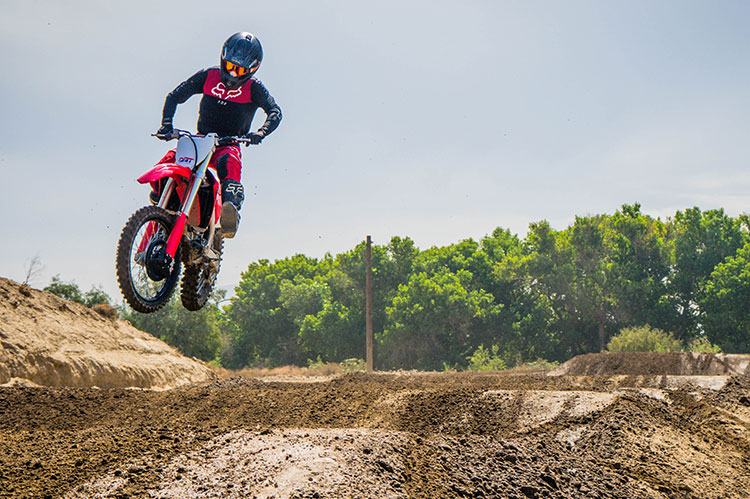
One of the biggest additions to the new CRF is the traction control (Honda Selectable Torque Control). The Honda’s system differs from that of the KTM and Husqvarna as it has three varying levels rather than just an on/off as seen on the Austrian bikes. The degrees of assistance increase in chronological order with one allowing the most amount of wheel spin and three having the least. Using it is very easy as well. Simply hold the button for three seconds, then touch it again for setting one, two, or three. We tried all three and ended up riding the third and most assistive setting at the end of the day once the track was dried out and slicker than it was in the morning. The HSTC is a nice option to have and helps inspire rider confidence especially off slick jump faces, tight inside lines, and anywhere where you feel like you’re riding the edge of the tire. More timid riders who are accustomed to smaller bikes also appreciate it as it helps in managing all of the horsepower the CRF puts out.

There’s quite a few noticeable differences when riding this bike back to back with one of our personal ‘18 CRF450R’s. The one that we feel the most is the overall motor package. The power plant on the ‘20 hits harder down low and curves into an overall stronger package when compared to the ‘18. The power on top seems to carry on longer into the red zone as well. The overall suspension and chassis seem stiffer too, with the frame, swing arm, and suspension updates being implemented on the ‘19 model.

The Honda CRF450R is once again one of the fastest and most capable bikes in the field. The new revisions to the motor, ECU, and suspension were well received by our riders and we look forward to putting more time on this red ride.
Support DBT, Shop and search for products through the link below:

